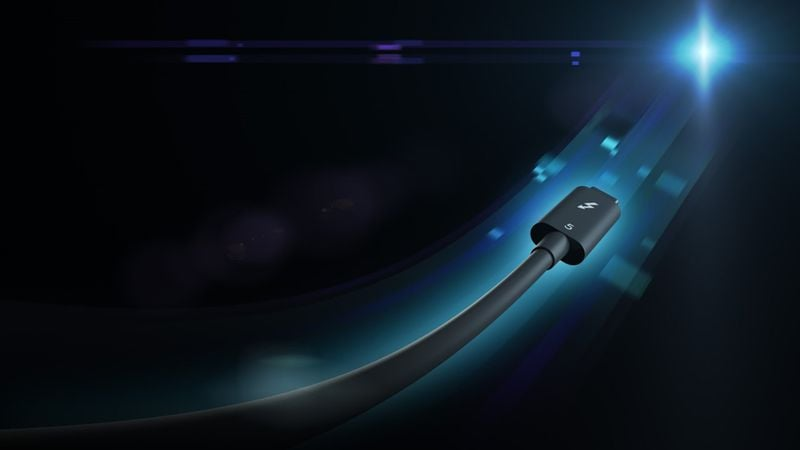Apple recently unveiled a new lineup of Macs, all powered by the next-generation M4 chips that deliver enhanced performance and efficiency. These models come equipped with either the M4, M4 Pro, or M4 Max chips. While the M4 powers the base models, the M4 Pro and M4 Max provide additional horsepower and incorporate advanced technologies like Thunderbolt 5, a high-speed data transfer protocol co-developed by Intel and Apple.
This’ the first major bandwidth increase since Thunderbolt 3 debuted in 2015.

What is Thunderbolt 5?
Thunderbolt 5 represents a significant leap in data transfer capabilities, supporting speeds up to 80 Gbps and up to 120 Gbps with the Bandwidth Boost feature, making it up to thrice as fast as Thunderbolt 4, which peaks at 40 Gbps. This allows for connections to high-resolution (up to 8K) high-refresh-rate monitors using a single USB-C port, though a Thunderbolt 5-compliant data cable is necessary.
Introduced in September 2023, Thunderbolt 5 is now available in Apple’s latest Macs, making them among the first commercial devices to support this technology.
With Thunderbolt 5, a device like the Mac Mini M4 can achieve up to 80 Gbps of bi-directional data transfer, meaning it can send and receive data at that speed simultaneously. This feature is perfect for high-resolution displays and enables rapid transfer of large files, such as 4K and 8K video footage.
A single Thunderbolt 5 port can power up to three 4K monitors at 144Hz or two 8K monitors, while also supporting connectivity to a wide array of accessories like monitors, external GPUs, storage drives, and more through a single connection. However, Apple Silicon currently does not support external graphics, limiting this feature to Intel-powered Thunderbolt 5 PCs.
Thunderbolt 5’s USB-C compatibility
A major benefit of Thunderbolt 5 is that it utilizes a standard USB-C port. To maximize the potential of Thunderbolt 5, you’ll need a certified Thunderbolt 5 USB-C cable, which is priced slightly higher than a regular USB-C cable.
Thunderbolt 5 is also backwards-compatible with Thunderbolt 4 and USB4 v2, so you can continue using existing accessories, albeit at Thunderbolt 4 speeds of 40 Gbps.
Do I Need Thunderbolt 5?
For most users performing everyday tasks like web browsing, document editing, or even photo editing, Thunderbolt 4’s 40 Gbps bandwidth remains more than adequate. Even 4K video editing and working with large file sizes works smoothly with Thunderbolt 4 connections, as many professionals will attest. The new Mac mini and base 14-inch MacBook Pro with M4 chip includes Thunderbolt 4 ports that should serve most of these users.
It’s worth considering Thunderbolt 5 if you work with 8K video, require multiple high-resolution displays, or regularly transfer extremely large files. The technology will be particularly beneficial if you work with virtual reality, 3D rendering, or high-end video production where every bit of bandwidth matters. However, remember that taking full advantage of Thunderbolt 5 requires compatible peripherals, which are just beginning to enter the market and typically command premium prices.
For most users, the presence of Thunderbolt 5 shouldn’t be the deciding factor when choosing between M4 and M4 Pro/Max Macs. The standard M4 models with Thunderbolt 4 will continue to serve the majority of users well, making Thunderbolt 5 a “nice-to-have” rather than a necessity for typical Mac buyers. The technology’s true benefits will likely become more apparent as compatible peripherals become more available and affordable over time.